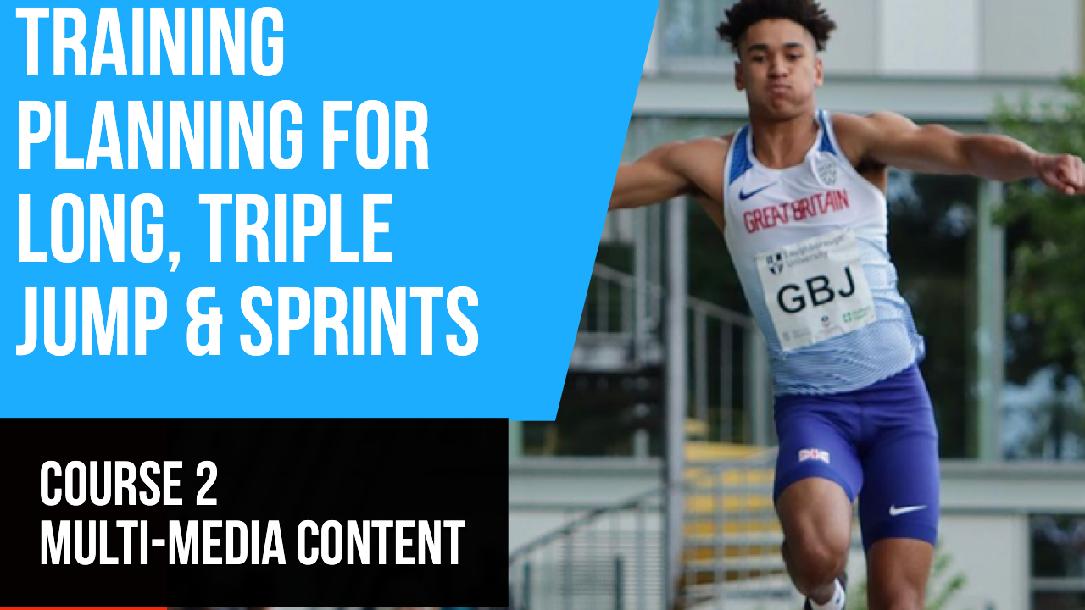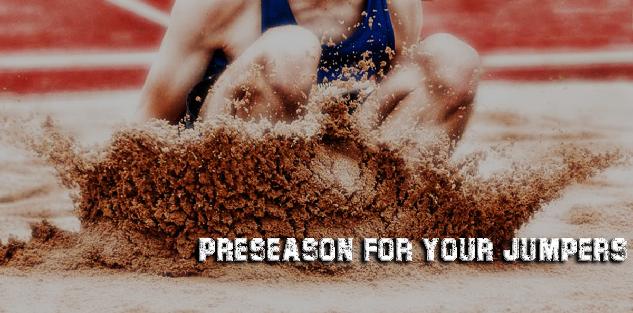TRAINING PLANNING FOR LONG, TRIPLE JUMP AND SPRINTS COURSE 2
by John Shepherd
Description
TRAINING PLANNING FOR LONG, TRIPLE JUMP AND SPRINTS COURSE 2
Elite UK coach John Shepherd builds on the previous course by taking you further into the specificS of setting and estbalishing a trainng programme that will produce great results for your athletes. He uses his over 15 years of coaching at all levels to showcase the drills, practises and workouts that will work. Coach Shepherd utilises a very systematic and specific approach to athlete prearation. He ensures that the key elements to improved performance are always of prime focus - specifically technique, specific power and speed.
Too many coaches waste time in his opinion building a foudatoinal base of strength and fitness and following old school linerar periodisation models. These methods have long been disproved and nowadays most elite coaches follow block or undulating periodisation models - where those hey variable that were previously references are never lost sight of. Coach Shepherd, for example, would want his athletes to be able to run within 90% of their best fly 20m for example at any time of the year.
IN THIS COURSE THERE ARE TWO VIDEOS AND THREE SUPPORTING ARTICLES
VIDEO 1 HOW TO PLAN TRAINING FOR THE INDOOR SEASON
In this video we take a look at how you can prep your athletes for the indoor season. Note even with the current COVID pandemic I still think it’s important to try to train through this period as if there was/is an indoors as this will pay dividends in the summer. The key driver I believe for prepping for the indoors is to ensure that the lead in is seamless ie that the jumper arrives at the start of the indoor season ready to perform well. This may sound obvious but many times a jumper can reach the indoors in a less than well prepared condition. For example, they may not feel comfortable with jumping from speed from longer run-ups (14-16 steps) ... so the prep for the indoors must include relevant step by step progression. As I indicate in previous videos in this members’ series each phase needs to allow for continued enhancement of performance and competition readiness. In How to Plan Training for the Indoors we talk in detail about how to achieve this. I reflect on the benefits of undulating periodisation and why I feel this facilitates better prep for jumping than linear periodisation models. We consider how you can integrate specific conditioning into indoor season prep and what sort of speed work will facility this. We also consider how to evaluate whether your athlete is ready. We look at the testing you can do but equally importantly what you see with your "coach’s eye".
And managing athlete expectation is also considered... it’s important as a coach to be able to do this in a "sensible" way so that the jumper is realistic yet inspired to jump well. I
This video will help your development as a coach
If you have any questions on this or other videos in the series or what you’d like to see covered in future ones do contact me.
VIDEO 2 HOW TO COACH DEVELOPING JUMPERS (AND ATHLETES)
In this video we take a look at how you can use the drills led, undulating periodisation methodology I use as described in my first Coach Tube course. Now I provide practical examples of how I use this approach. We will see a couple of case studies of athletes I coach.
Firstly, we look at heel recovery and how that can be developed and improved upon in a jumper (Ruby) who needed to work on this.
Secondly we look at how you can develop mid-air technique.
We consider a session that I did with the jumper and how we started to learn the hitch-kick. I think what's particularly interesting is the fact that because I focus on the same athlete over a number of years, you'll be able to see the technical progression coupled with physical and maturation development.
Maturation is also considered in the video by way of some slides and some commentary. You should study the slides and other content in your own time to get a further understanding as to how young athletes develop.
There is one particular slide that I think provides some very interesting information. It focusses on percentage improvements in developing jumpers and also looks at who is most likely to be successful through and into senior careers.
Here are two very telling research statistics:
1: Norwegian research shows that: Boys improve by 48% in the long jump and Girls 26% between 11-18 years of age (sex differences between males and females explains the variation).
2: Very few elite u17 and u20 jumpers actually achieve highly on the world stage as seniors. Only 2.5% of finalists at five Junior World Champ events won medals between 2005 -2011 at senior World Champs and at the 04-12 Olympics.
It therefore becomes very apparent how important it is to coach the young jumper as optimally as possible.
I believe the content of this video will help you do the best job you can in this respect.
SUPPORTING ARTICLES
The articles add further to your understanding of how to better coach the jumps and sprints.
Article 1 looks at maturation, injuries, growth spurts and periods of peak hight and weight velocity in overview. Gaining an understanding of this will better infrom your coaching
Articles 2&3 are in a way bonus material relevant to the long jump in so far as they specifically deal with coaching the take-off. The first looks at the importance of the eccentric component of the take-off and the second how to set the jump up on the penultimate and take-off steps
Lessons
The Coach
Coach John Shepherd is an ex Team GB long jumper and now coach to top athletes of all ages... from English Schools Champions, to European junior Champions to senior internationals. He's coached for the England team and has been a coach educator for England, Ireland and Belgium. Coach Shepherd is also an author having written eight books on fitness & sports training and hundreds of training articles for newspapers and magazines.
Ratings and Reviews (0)
This Course Includes
| 24 hours on-demand video |
| Streaming from mobile and TV |
| Lifetime access |
| Certificate of completion |
| 100% money back guarantee |
Course Info
| Rating: | (0) |
|---|---|
| Caterory: | Track and Field/Coaching Track & Field |
| Duration: |



